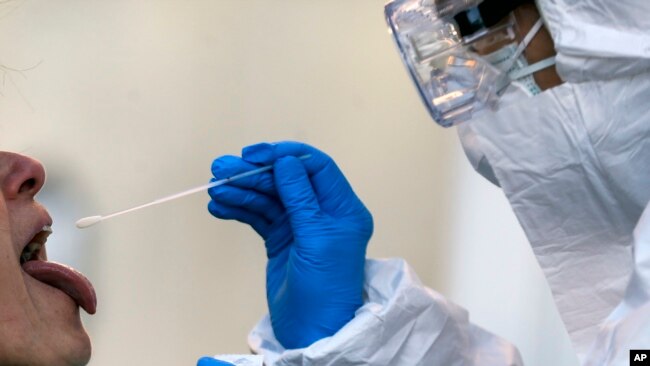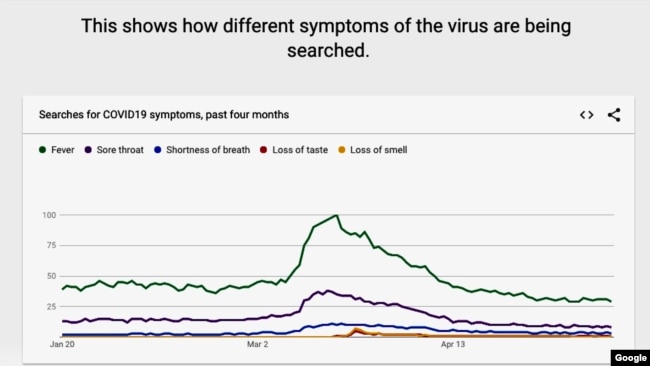インターネット診断ツールへの過大なる期待は危険?!
診断ツール、WHOでもアプリ開発中とか。
世界から優秀な人材が結集して、頼もしい話です。
しかしながら、、、、というVOAの話題です。
オンライン症状チェッカーはどれくらい効果があるのか? (和訳)
多くのインターネットツールは、ユーザーが記述した症状に基づいて、その人がどのような病気にかかっているかを特定しようとしています。新しい研究では、これらのオンライン症状チェッカーが正しいことはほとんどなく、有害である可能性があることが判明しました。
この研究を行ったのは、オーストラリアのパースにあるエディス・コーワン大学の研究者たちです。彼らの結果は、オーストラリアのMedical Journal of Australiaに掲載されました。
オンラインの症状チェッカーは、主要な検索エンジンでよく見かけます。例えば、グーグルでは、毎分7万件の健康関連の検索が行われていると推定されています。
この研究では、36の国際的なインターネットベースの症状チェッカーを調査しました。これらのツールは、ユーザーが経験している症状についての一連の質問を行い、その情報をもとにユーザーが患っている可能性のある症状を特定するものです。
ツールによっては、医師の診察を受けるべきかどうかをユーザーにアドバイスするものもあります。
この研究では、全体的に、症状チェッカーは36%の確率で正しい診断を最初の結果として導き出していることがわかりました。ツールは、上位3つの結果の中で52%の確率で正しい診断を予測していました。
ミッチェル・ヒル氏はパースにあるエディス・コーワン大学の学生で、この研究のリーダーです。彼女は、ユーザーが診断目的のためにシステムを使用することについて非常に慎重でなければならない理由を示す調査結果だと言っています。「症状の原因となっているものを見つけるためにこれらのツールを使用することは魅力的かもしれませんが、ほとんどの場合、これらのツールはよくても信頼性が低く、最悪の場合は危険な場合があります。」とヒルは話していました。
彼女は、オンライン症状チェッカーの主な問題の一つは、あまりにも少ない情報に依存していることだと言います。「それらは全体像を見ていないのです - あなたの病歴や他の症状を知らないのです。」
ヒル氏は、「健康に関する知識がない人にとっては、与えられたアドバイスが正確である、または自分の状態は深刻ではないと思うかもしれません。」と付け加えます。
オーストラリアの研究では、いつ、どこで医師の診察を受けるべきかのアドバイスについては、症状チェッカーの方がより正確な結果が得られています。緊急時や重症の場合のアドバイスは、約60%の確率で正確でした。この数字は、緊急以外の場合は30~40%の精度にまで落ちています。
ヒル氏は、オンラインの症状ツールは、現代の医療システムにおけるニーズを効果的に満たすことができると考えていると述べています。「これらのサイトは医者に行く代わりにはならないですが、公式な診断を受ければ、より多くの情報を提供するのに役立つでしょう」と彼女は話してくれました。
新しいコロナウイルスに関する情報に関連したインターネット検索は、最近数ヶ月の間にGoogleで他のすべての検索よりトップにきていたと、google トレンドウェブサイトは報告しています。また、多くのユーザーはウイルスの症状についての情報を求めてGoogleに目を向けているのです。
過去4ヶ月間で最も検索されたコロナウイルスの症状は発熱だったと,Google トレンドは示しています。次いで、喉の痛み、息切れ、味覚障害、嗅覚障害が続きました。
Googleはまた、コロナウイルスが原因の病気COVID-19に関連した症状を確認できるツールをユーザーに提供しています。同社によると、このツールは”情報提供のみを目的としたもの”であり、医学的な診断を提供することを意図したものではないといいます。
世界保健機関(WHO)は今月初め、独自の症状チェックツールを立ち上げる予定であると述べました。WHOの関係者はロイター通信に対し、ワイヤレスデバイスツールは、独自の開発リソースが不足している国で普及すると予想されていると語っています。
グーグルやマイクロソフトの元社員を含むエンジニアやデザイナーが、WHOアプリの開発にボランティアで時間を割いているとロイターは報じていました。
未知なるヴィルスとの付き合い方
敢えて集団免疫力を付けようと、ロックダウンも外出規制もしなかったスウェーデン。途中からロックダウンに踏み切ったイギリス。国により様々な対応が見られたコロナ。
10年毎に出現するとも言われている新しいヴィルス。
さて、どのようにしたらいいのでしょうか。
医師の桐村先生のサイトを見つけましたのでご紹介します。
【新型コロナ】から学ぶウイルスとの付き合い方|免疫力と常在細菌の防御力を再確認 | WELLMETHOD
先生が言われるには、彼らの目的は、「人を殺そう」というのではく「生存」と「種の繁栄」だそうです。
それだけ聞いても恐ろしい感じですが。
その目的のためには、ハッキングする家を持つホストと共存共栄する道も選ぶ。今回の新型コロナウイルスについても、最終的には弱毒化して、人との共存を目指すことになるだろうと予測されています。実際に、常在細菌やウイルスは、このような道を選拓しているそうです。
彼らがある程度、人間界での空気の読み方を身につけてくれるまでは、辛抱が必要とのこと。共存の道をヴィルスともに歩む覚悟が必要ですね。
そこで免疫力の付け方
今一度見直すべきは、人の体を内側で守る免疫細胞による免疫力、そして、人の体を外側で守る常在細菌バリアによる防御力だと先生は言われています。
「免疫力を維持する為にビタミンDをしっかり摂りましょう」
ビタミンDは、太陽に含まれる紫外線UVBを浴びることで皮膚で作られ、鮭や干し椎茸などの食材に豊富に含まれるそうです。
鮭の切り身1つを毎日の食卓に加えれば、一日の所要量を十分に賄うことができるとのこと。
これなら出来そうです。
ビタミンDを含有する食材☟一覧見つけました。
ビタミンDの多い食品と、含有量一覧表 | 簡単!栄養andカロリー計算
バリアを壊さず洗い流す方法
日常的に行うとしたら、十分な水洗いか殺菌効果のない石鹸での手洗いでウイルスを洗い流しながら、常在菌バリアへのダメージを最小限にする方法をお勧だそうです。あら、アルコール消毒ガンガンしてました。
殺菌効果の石鹸でゴシゴシ、結果肌荒れで、ハンドクリームべたべたと。
敵を知らなきゃ、いけませんね。
鮭を毎日食べましょう!
原文
Many internet tools seek to identify what disease a person has based on symptoms described by the user. A new study finds these online symptom checkers are rarely correct and could be harmful.
Australian researchers at Edith Cowan University in Perth, Australia did the study. Their results were published in the Medical Journal of Australia.
Online symptom checkers are commonly found through major search engines. Google, for example, gets an estimated 70,000 health-related searches every minute.
The study examined 36 international internet-based symptom checkers. The tools ask a series of questions about the symptoms users are experiencing and then use that information to identify conditions the users might suffer from.
Some tools also advise users on whether to seek medical attention.
The study found that overall, symptom checkers produced the correct diagnosis as the first result 36 percent of the time. The tools predicted the right diagnosis within the top three results 52 percent of the time.
Michella Hill is a student at Edith Cowan and a leader of the research. She says the findings demonstrate why users should be very careful about using the systems for diagnostic purposes. "While it may be tempting to use these tools to find out what may be causing your symptoms, most of the time they are unreliable at best and can be dangerous at worst," Hill said.
She said one of the main problems with online symptom checkers is that they depend on too little information. “They do not look at the whole picture -- they don't know your medical history or other symptoms.”
Hill added: "For people who lack health knowledge, they may think the advice they're given is accurate, or that their condition is not serious, when it may be."
The Australian study did find the symptom checkers produced more accurate results for advice on when and where users should seek medical attention. The advice for emergency and serious medical cases was correct about 60 percent of the time. That number dropped to 30-40 percent accuracy for non-emergencies.
Hill said she does think online symptom tools can effectively fill a need in the modern health system. "These sites are not a replacement for going to the doctor, but they can be useful in providing more information once you do have an official diagnosis," she said.
Internet searches related to information about the new coronavirus topped all others in recent months on Google, the Google Trends website reports. Many users have also turned to Google for information on virus symptoms.
The top-searched coronavirus symptom by far over the past four months was fever, Google Trends shows. This was followed by sore throat, shortness of breath, loss of taste and loss of smell.
Google also provides a tool for users to check their symptoms related to COVID-19, the disease caused by the coronavirus. The company says the tool is designed “for informational purposes only,” and not meant to provide a medical diagnosis.
The World Health Organization (WHO) said earlier this month it is planning to launch its own symptom checking tool. A WHO official told the Reuters news agency the wireless device tool is expected to be popular in countries lacking their own development resources.
Engineers and designers – including former Google and Microsoft employees – have been volunteering their time to develop the WHO app, Reuters reported.
________________________________________________________________
Words in This Story
symptom – n. a change in the body that shows a disease is present
diagnosis – n. a doctor’s opinion of what is wrong with someone who is sick
tempting – adj. having an appeal
unreliable – adj. not able to be trusted or depended on
accurate – adj. correct or exact
fever – n. a high body temperature caused by sickness


